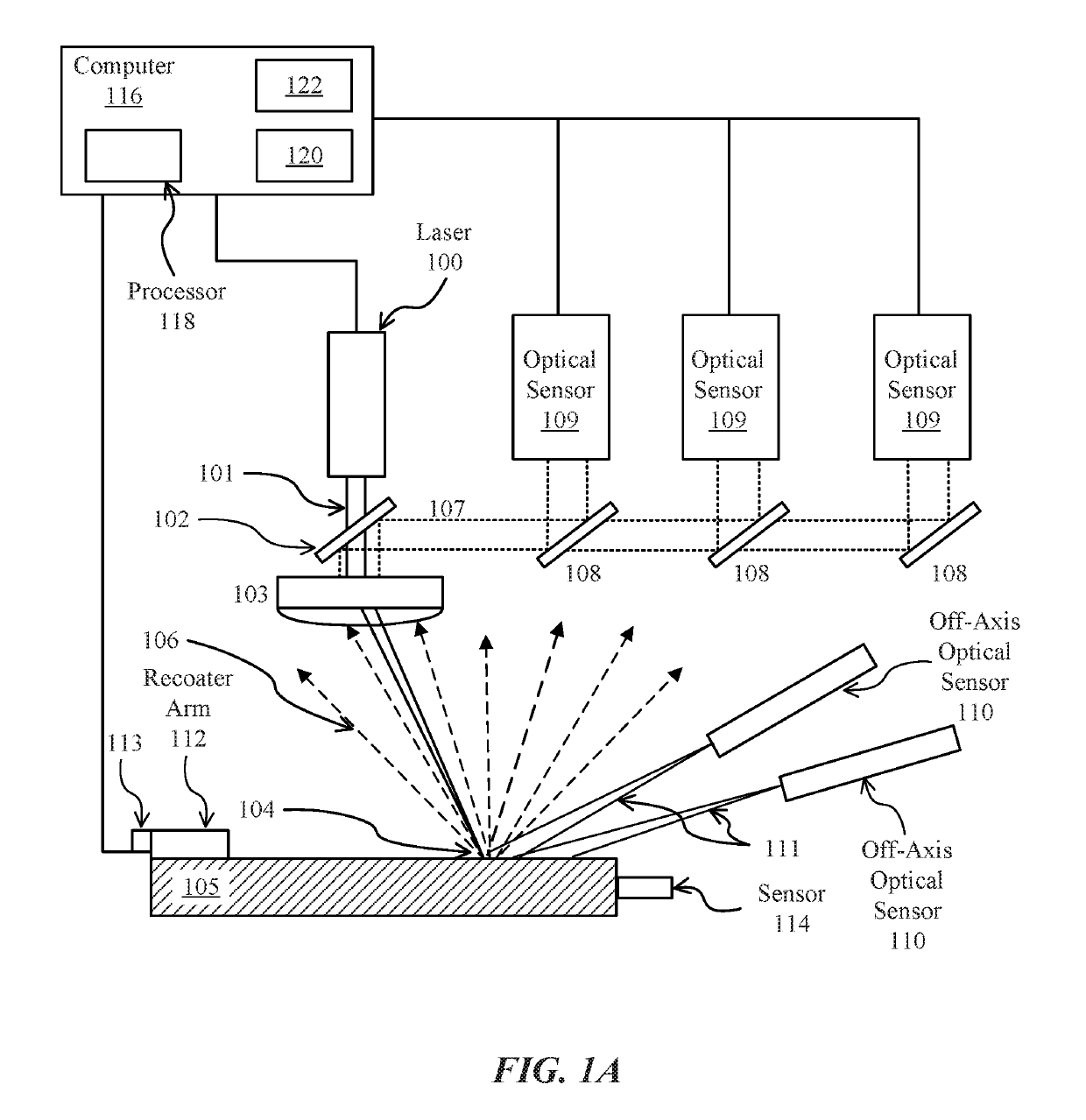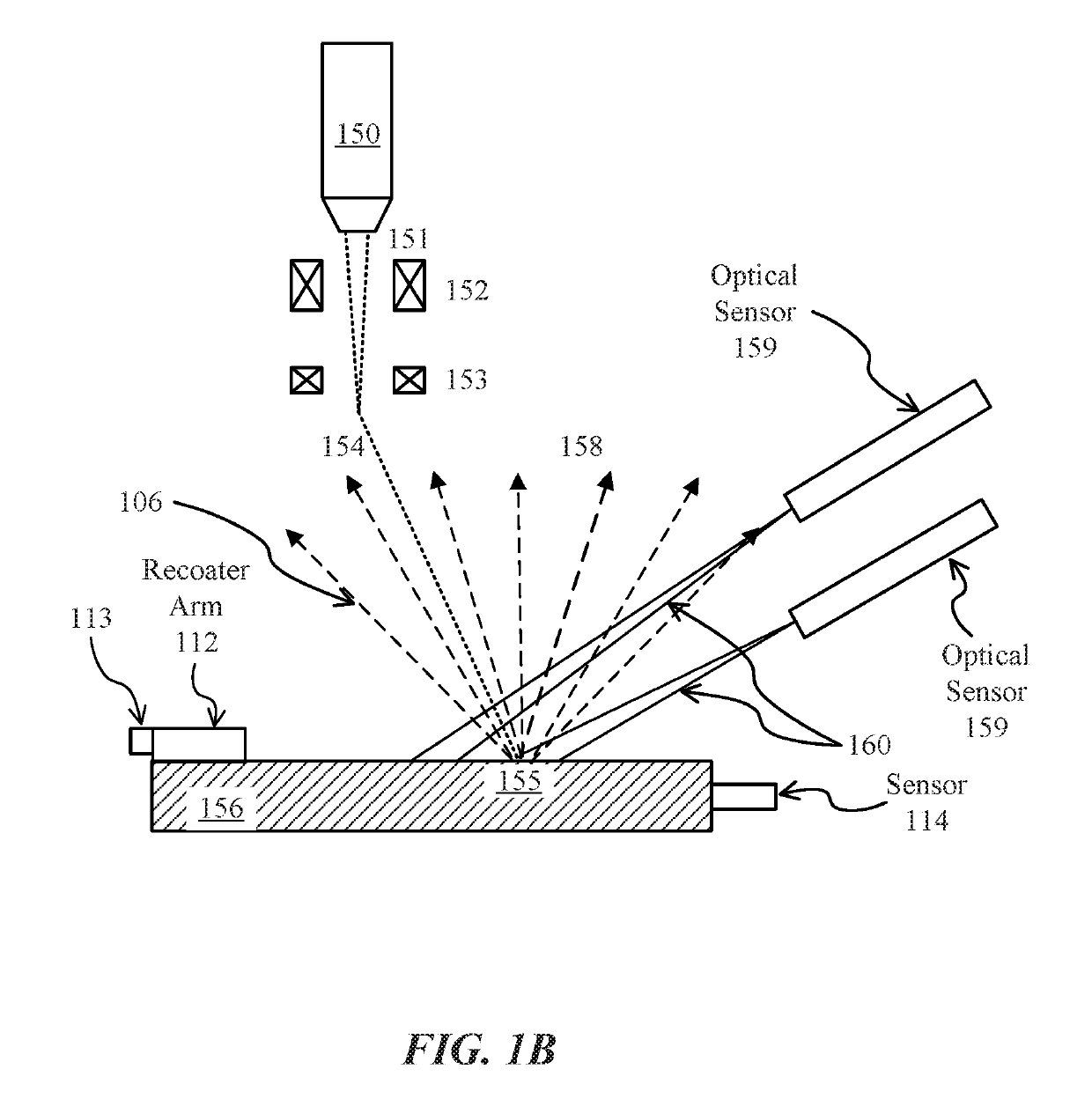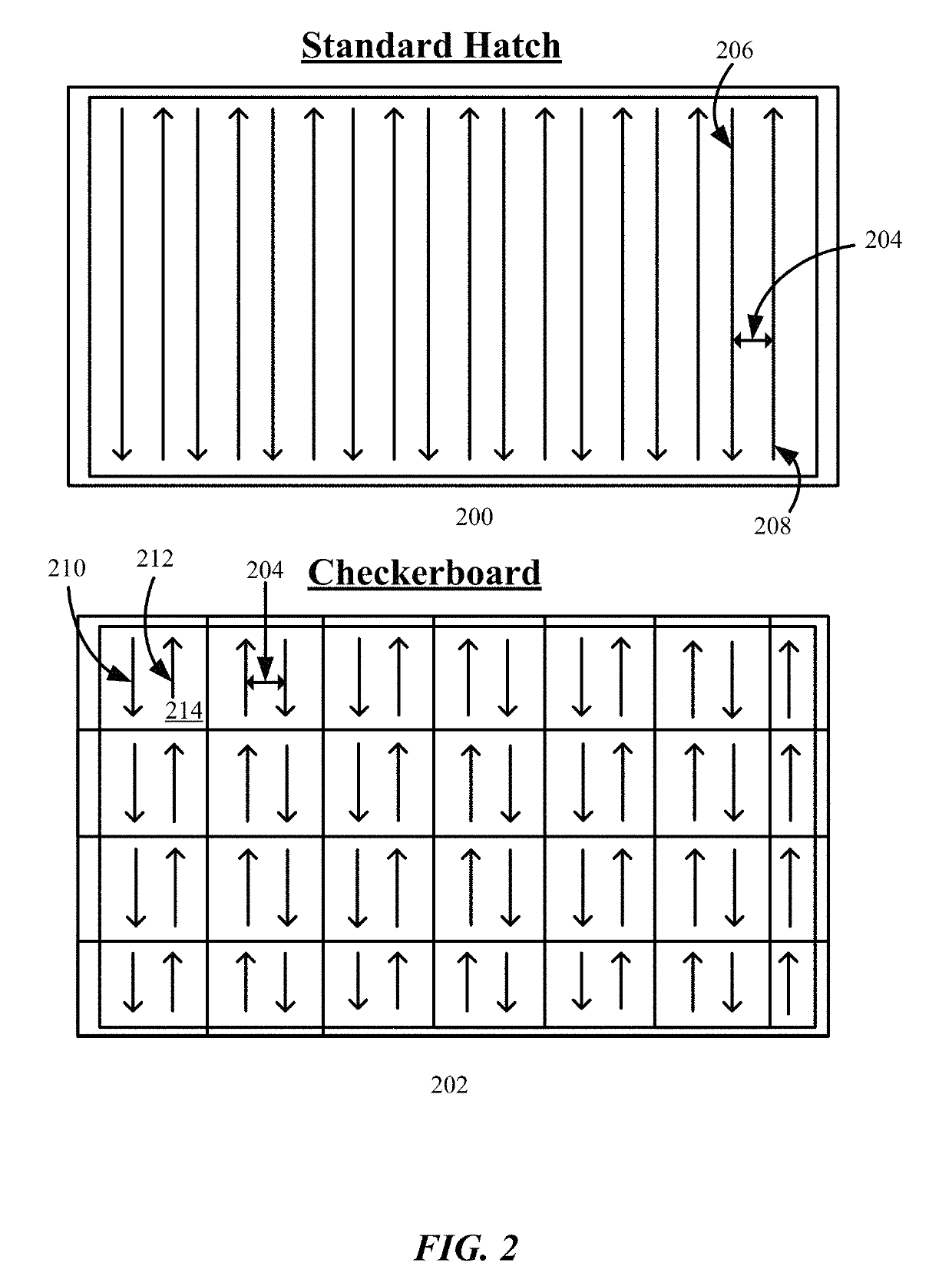Systems and methods for measuring radiated thermal energy during an additive manufacturing operation
a technology of additive manufacturing and measuring system, applied in the direction of manufacturing tools, turbines, mechanical equipment, etc., can solve the problems of difficult to avoid at least slight variations in size and temperature, and achieve the effects of reducing or minimizing discontinuities, high travel rates, and long additive machining processes
- Summary
- Abstract
- Description
- Claims
- Application Information
AI Technical Summary
Benefits of technology
Problems solved by technology
Method used
Image
Examples
Embodiment Construction
[0038]FIG. 1A shows an embodiment of an additive manufacturing system that uses one or more optical sensing apparatus to determine the thermal energy density. The thermal energy density is sensitive to changes in process parameters such as, for example, energy source power, energy source speed, and hatch spacing. The additive manufacturing system of FIG. 1A uses a laser 100 as the energy source. The laser 100 emits a laser beam 101 which passes through a partially reflective mirror 102 and enters a scanning and focusing system 103 which then projects the beam to a small region 104 on the work platform 105. In some embodiments, the work platform is a powder bed. Optical energy 106 is emitted from the small region 104 on account of high material temperatures.
[0039]In some embodiments, the scanning and focusing system 103 can be configured to collect some of the optical energy 106 emitted from the beam interaction region 104. The partially reflective mirror 102 can reflect the optical ...
PUM
| Property | Measurement | Unit |
|---|---|---|
| wavelength | aaaaa | aaaaa |
| wavelength | aaaaa | aaaaa |
| wavelength | aaaaa | aaaaa |
Abstract
Description
Claims
Application Information
 Login to View More
Login to View More - R&D
- Intellectual Property
- Life Sciences
- Materials
- Tech Scout
- Unparalleled Data Quality
- Higher Quality Content
- 60% Fewer Hallucinations
Browse by: Latest US Patents, China's latest patents, Technical Efficacy Thesaurus, Application Domain, Technology Topic, Popular Technical Reports.
© 2025 PatSnap. All rights reserved.Legal|Privacy policy|Modern Slavery Act Transparency Statement|Sitemap|About US| Contact US: help@patsnap.com



